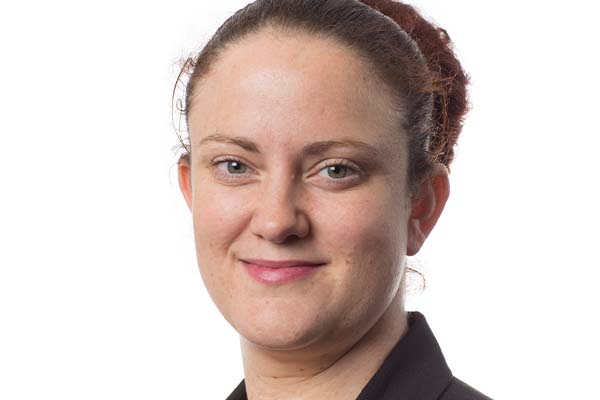Sian Sayward, governance director of beam, reveals what its members need from technology, from broadband and AV to seamless streaming and skilled operators.
Technology has been crucial to the survival of the events industry over the past two years. Venues and agencies were able to adapt at speed and were fast-tracked into the digital future of events. Now everyone is getting back to business, what role will hybrid and virtual events play going forward? What does the future really look like for technology in the industry?
Key findings
To tackle these questions, beam surveyed its agency and venue members in the UK business events, accommodation and meetings sector.
When asked about the changing needs for technology in venues, more than half (55%) of respondents said that broadband was by far the most important for event planners. While 19% said AV, followed by hybrid meetings technology (15%), and 11% voted for direct online availability.
The reason broadband came out on top is because “without superfast, efficient and free broadband, the rest is simply pointless,” says Louisa Watson, director of marketing at Wyboston Lakes Resort. Sally Doyle, director of Infusion Events, agrees: “Poor broadband is difficult to fix and is not tolerated by speakers, sponsors or delegates.”
The truth is, it is a “blend of all these technologies that is important,” says Richard Lloyd, technical and ICT operations manager of the EICC. “Fast, reliable broadband is obviously important, but an online audience cannot engage with an event if the audio quality is poor.”
There are many other technologies that are growing in importance for venues and agencies, too. Caleb Parker, founder and director of Bold, says these include “mobile-friendly booking user experience, and technology that enables seamless interaction between onsite and remote teams, such as virtual whiteboards and community engagement tools.”
Services such as video production and streaming are an absolute advantage to event organisers, too, adds Stephanie Macfarlane, senior corporate and agency sales manager, ACC Liverpool.
Missing from the list of priorities is people, explains James Bogle, head of marketing and communications of QEII Centre. “Skilled, trained operators are the most important technical resource along with the kit. Not only do they need the training, skills, and experience to operate the equipment, but they also need to be cool and calm to deliver under the pressure of running a live event.”
The role of hybrid and virtual post-pandemic
The beam survey also revealed some thoughts on the main role of hybrid and virtual events going forward. Approximately 57% of respondents described them as a “Plan B for when in-person events are not practical”. The remaining 43% said they will continue to replace smaller in-person meetings to save time and travel costs. There is also the benefit of saving carbon emissions, too.
Several respondents added that that the virtual element would be used to broaden the reach of in-person events. This is consistent with what etc.venues is seeing in the marketplace, where physical events are very much the first priority for planners. Charlotte Culley, senior sales manager and hybrid events specialist at etc.venues, says: “Our surveys show that planners are returning to live-only events at the moment. Where hybrid technologies are being used is to extend the content and engagement of the in-person event to an online audience.” This content can also be made available on-demand, helping to prolong the life of the event.
There is also a growing trend for the hub and spoke format for hybrid events. Rachel Macaulay, head of Vue Conferences and Events UK, reveals: “Hub and spoke events, based on the image of a wheel, are where the centralised message comes from the ‘hub’ and is delivered to the ‘spoke’ venues around the country or overseas. These are becoming more popular and will replace a lot of roadshows.”
Ultimately, the core role of hybrid and virtual events going forward will be to support and complement on-site conferences. “While they save time and travel costs, nothing can replace face to face meetings. A combination of the two is therefore a useful solution to the new events landscape,” says Macfarlane.
While smaller in-person meetings tend to have moved online, it “isn’t all bad news” for event planners, says Nick Scott, managing director of ArrangeMY. He points out that the past two years have “opened minds as to what is possible with technology and how easy it is. We are now seeing greater value placed on real live events and the added value it brings to building relationships.”
Trends and challenges
The key to navigating the new normal is being goal focused. Marc Hazelden, strategy and innovation director of Top Banana, remarks: “Technology is always going to be integral in achieving a unified audience experience. However, your focus should always remain on the desired outcome of the event.”
Technology moves at such a fast pace too, which means “the biggest challenge is future-proofing and ensuring the technology investment isn’t outdated a year after you buy it,” warns Parker.
Another major obstacle is “attracting skilled staff who understand the demands of a remote audience and who can negotiate the myriad of offerings in terms of the ‘hybrid’ meeting,” says Bogle. “During the pandemic, many skilled technicians left the industry, and recruiters across the industry are working hard to address this shortage of skills.”
Looking ahead to the future, as the world of events settles into its new normal, hybrid and virtual events will become more refined and physical events will be strengthened by the accelerated digital disruption of the pandemic years.



















